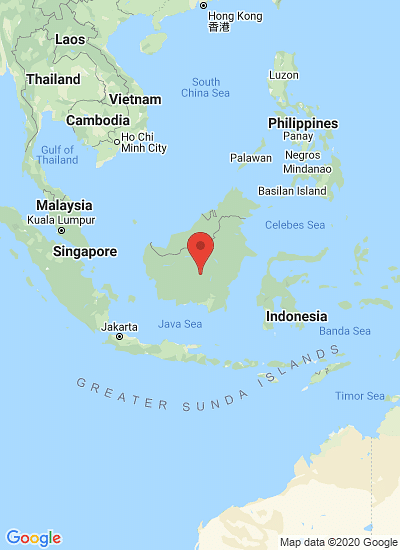The workers in a potato warehouse before distribution to various regions. Courtesy: Teguh Suprayitno for Mongabay Indonesia.
Expanding Potato cultivation on Sumatra, Indonesia cause for environmental concerns
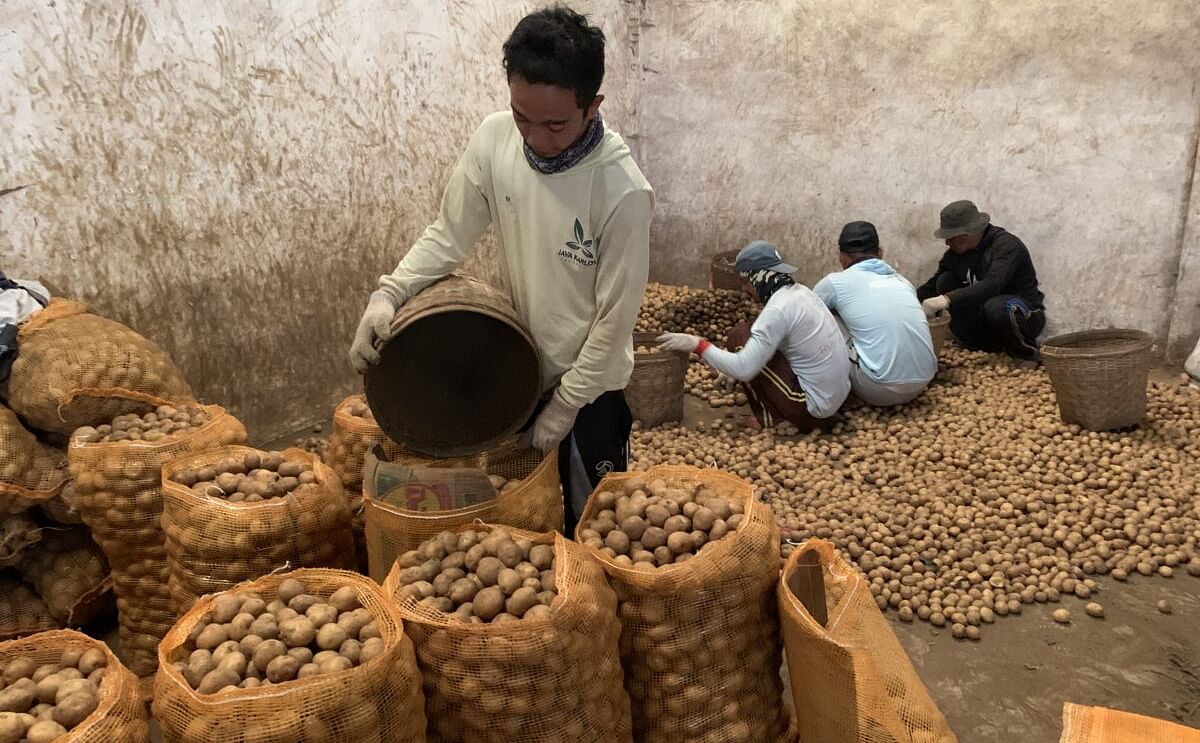
Every day this restaurant uses dozens of kilograms of potatoes to prepare its perkedel. Few diners are likely aware that the potatoes used in this common Indonesian dish originate from one of the world’s most biodiverse national parks.
Not far from the restaurant, in a shop unit adjacent to a covered market, Uda Heri makes the most of some quiet time. Heri is one of the suppliers at Jambi’s Angso Duo Market, a covered wet market near the banks of the Batang Hari River. Every day he sells up to 4 metric tons of potatoes, to as many as 30 market traders.
Uda Heri:
"Most of the potatoes in Jambi come from Kerinci."On an afternoon in March, a truck laden with 8 metric tons of vegetables rolls slowly into Angso Duo Market. Workers empty out the truck and distribute dozens of sacks of potatoes, each weighing around 40 kilograms (88 pounds), to the market’s traders.
Heri is a middleman who buy potatoes from another middleman, who buys from the Kerinci Seblat farmers. He’s just one link in a convoluted supply chain that typically weakens the farmgate price paid to the producer, in this case small farmers on precarious legal ground.
Data from the statistics agency in Jambi province showed potato production in Jambi reached 129,336 metric tons in 2020. More than 94% of the potatoes in the province are said to come from fields in and around Kerinci Seblat, which was established as a national park in 1982 and is Sumatra’s largest. The province is home to some 3.6 million people.
In recent years, the potato crop area in Kerinci Seblat has increased rapidly. Government data show the area amounted to 3,345 hectares (8,266 acres) in 2015. Five years later, potato land had expanded to 5,630 hectares (13,912 acres). The potato was not the first choice of agricultural commodity here in this corner of Sumatra.
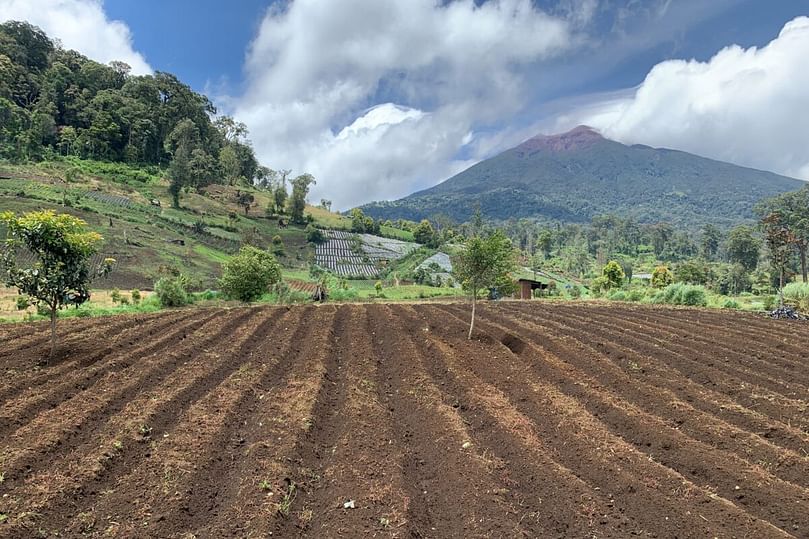
A potato field near Lake Belibis in Kerinci Seblat National Park, some 2,000 meters above sea level. Courtesy: Teguh Suprayitno for Mongabay Indonesia.
The fallout led to a supply glut and forced millions of the region’s smallholders, from Sri Lanka to Sumatra, into destitution. Before the Asian financial crisis, cinnamon was so popular that a kilogram of Kerinci cinnamon fetched the same price as 50 kilos of rice. Local residents built houses and bought cars on the back of the dark and sweet spice.
Farmers said the price per kilogram collapsed by nearly two-thirds after 1998. This had a devastating economic impact on poorly diversified cinnamon farmers. Many cut down their cinnamon trees and replanted the land with less valuable vegetables.
Some fields lapsed into disrepair. Other farmers cleared new areas for planting, expanding the scale of the land bank to compensate for the loss of the higher-value commodity. The result has been gradual encroachment into the national park.
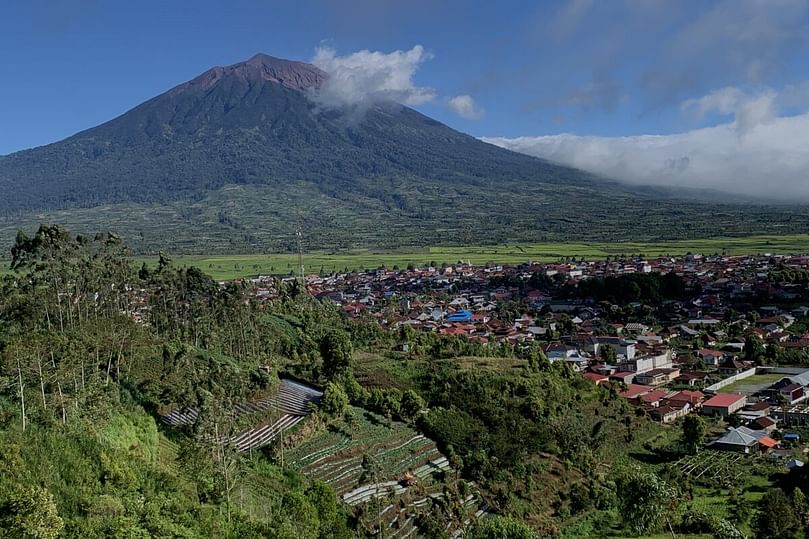
A village in the foothills of Mount Kerinci, the tallest peak in Sumatra, Kerinci district. Courtesy: Teguh Suprayitno for Mongabay Indonesia.
The park straddles four provinces, and in 2011 UNESCO listed it among three forests in Sumatra as World Heritage Sites. Kerinci Seblat is one of the last refuges of the Sumatran tiger (Panthera tigris sondaica), Sumatran elephant (Elephas maximus sumatranus) and the Sunda clouded leopard (Neofelis diardi). It’s also home to Sumatra’s highest peak, the 3,805-meter (12,484-foot) Mount Kerinci, an active volcano.
According to satellite monitoring platform Global Forest Watch, old-growth forest cover remaining in the district of Kerinci (one of several that make up Kerinci Seblat National Park) declined from 97% to 92% from 2015-21.
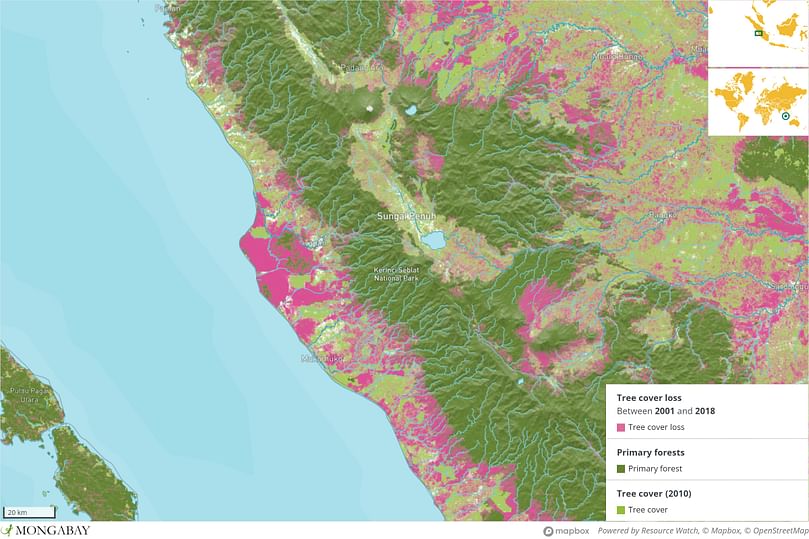
Forest Cover Map
The forest around the village of Gunung Labu, in the part of the national park near Jambi’s border with West Sumatra province, is almost 300 kilometers (190 miles) from the restaurant and covered market in the north of Jambi city.
A black beagle bounds through the trees and stops in its tracks, its gaze fixed ahead. A man emerges from behind a small hut. The hound barks and glares.
Warto, a local resident, not his real name:
"We are being watched."The sound of chainsaws and a sense of unease drift through the valley here, at an elevation of more than 2,000 m (6,600 ft) in the western corner of the national park. Warto says the recent arrests of tree loggers has cemented locals’ suspicions of outsiders.
Data published by Indonesia’s Ministry of Environment and Forestry show its law enforcement division opened more than 100 cases on illegal logging in the first four months of 2023. That compares with just more than 40 cases in the whole of 2015.
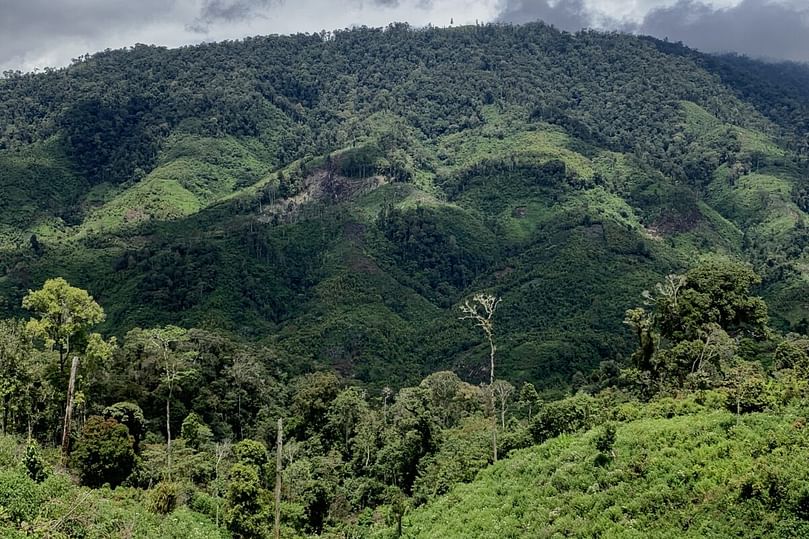
Forest area encroachment in Kerinci Seblat National Park. Courtesy: Teguh Suprayitno for Mongabay Indonesia.
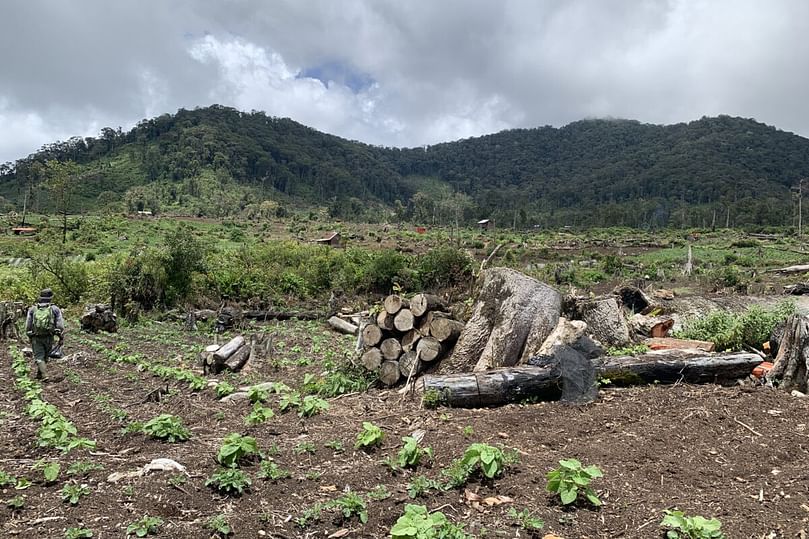
One of the agricultural fields next to Kerinci. Courtesy:Teguh Suprayitno for Mongabay Indonesia.
Originally from Indonesia’s main central island of Java, Nono, not his real name, moved to Sumatra under the central government’s transmigration program, which relocated millions of people from population centers like Java to spur to develop in hinterlands such as Jambi.
Nono acquired land from the local Indigenous population, the Siulak people, and over time he accumulated a total of 10 plots, measuring a combined 0.4 hectares, or 1 acre.
Nono:
"We didn’t dare to just cut down the forest — we bought all the fields. We had a little money, there were people from the community selling, so we bought it."Land outside the national park is too costly, Nono says. A plot measuring 1 andong, a local unit of 400 square meters, or about a tenth of an acre, would typically sell for up to 200 million rupiah outside the park. A farmer realistically requires 10 andong, or 1 acre, to farm vegetables at the scale needed, he says. Freehold prices are out of reach, meaning many become tenant farmers.
In the hills of Mount Kerinci, most farmers lack the money to plant potatoes (each andong requires up to 3 million rupiah, or USD 200, to plant). This locks farmers into debt traps where local elites provide financing for planting, and buy potatoes at a preferred rate directly from farmers at harvest.
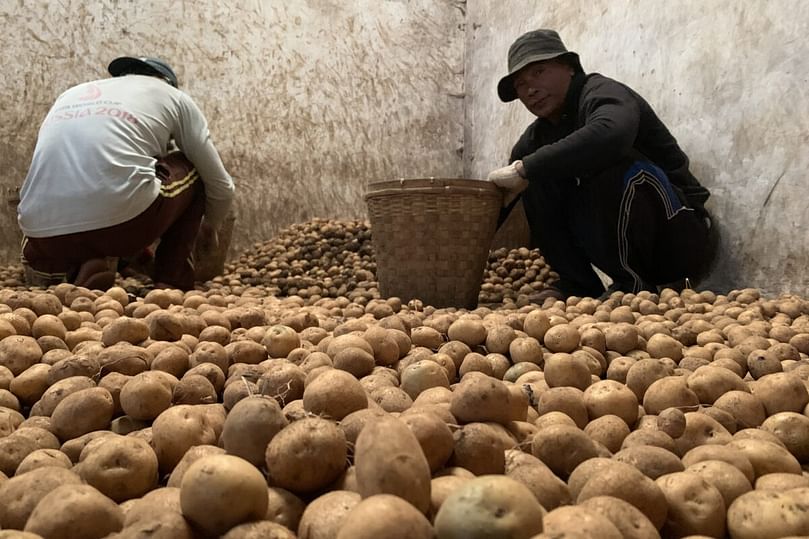
Workers in a potato warehouse in Kebun Baru village sort the harvest according to size before sending them to Jakarta. Courtesy: Teguh Suprayitno for Mongabay Indonesia.
A local resident:
"That’s Alti’s farm."Alti Irawan recently won promotion as chief of the Gunung Kerinci police precinct in Jambi’s Kerinci district. He owns an 8-hectare (20-acre) plantation of cinnamon trees that lies half a kilometer (0.3 miles) inside the boundary of the national park, according to a GPS review by Mongabay Indonesia.
Alti Irawan:
"I bought it a long time ago, around seven to 10 years ago. When I bought it, I was told it was not in the area [of the national park]."When asked about the newly built, two-story house further upslope, Alti abruptly ends the phone call. Nurhamidi, a national park manager working for Indonesia’s environment ministry, says efforts to enforce the park boundary are complicated by realities on the ground.
Nurhamidi:
"Sometimes we are still on our way over and they already know [we’re coming]. In some areas where there’s poor phone reception, they use [two-way radios] to communicate. If people here see someone new, they immediately run away. They think it’s officers here to arrest them."
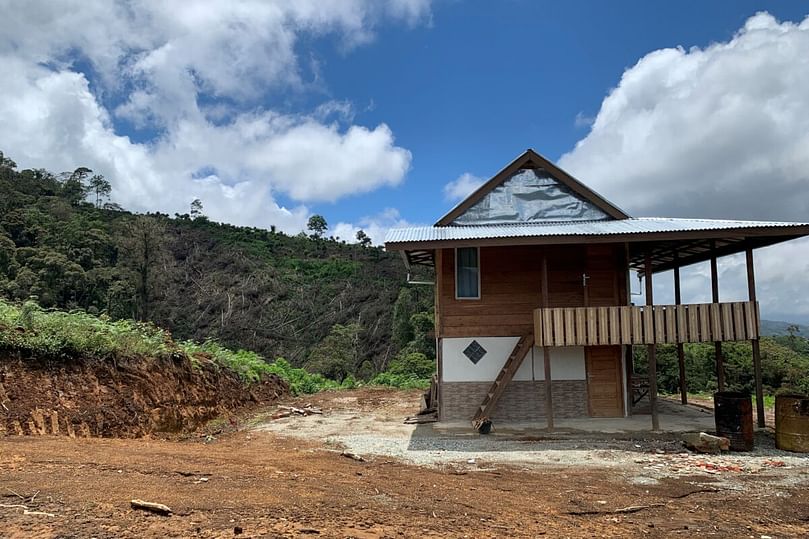
Alti Irawan’s house on a hill next to a cinnamon garden. Courtesy: Teguh Suprayitno for Mongabay Indonesia.
Nurhamidi:
"There’s speculation, but it’s difficult to prove."Moreover, some residents whose livelihoods depend on agriculture in the national park have resisted when confronted by the state. In 2021, a team of forest rangers, a community forestry organization and a conservation group entered the area of Danau Tinggi village, not far from Gunung Labu village, to arrest a group of four loggers. The party was met by more than 100 local farmers, some armed with machetes.
Tukino, who works for the conservation group:
"The people of Danau Tinggi all stood together. They were ready to fight. It was better to be safe than sorry. If we’d insisted on taking the loggers away with us, there would definitely have been a clash."
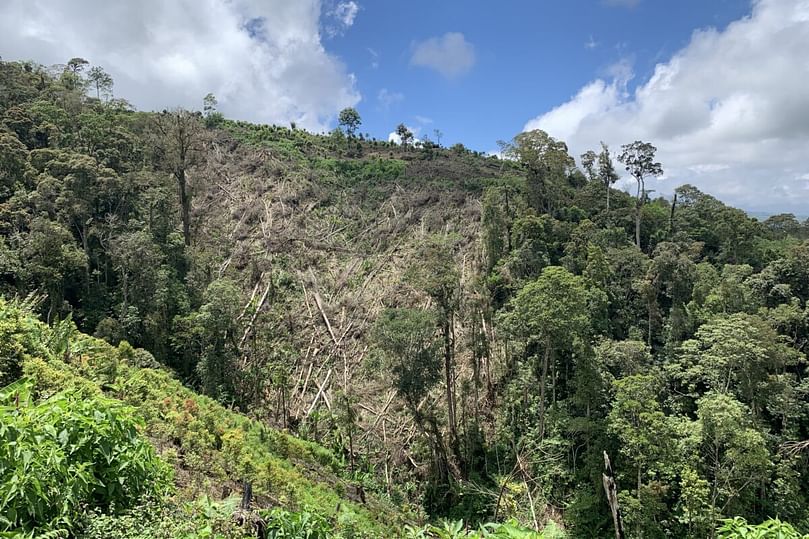
Encroachment into the forest area in Kerinci Seblat National Park. Courtesy: Teguh Suprayitno for Mongabay Indonesia.
Sukmareni from Jambi-based conservation group KKI Warsi:
"If there is no more forest, runoff will eventually occur that will erode nutrients very quickly — the soil will become infertile. What was originally wished for, prosperity, would instead lead to the opposite."In the Jambi city restaurant, kitchen staff pound potatoes into savory fritters and ferry the dishes to tables during the brisk lunchtime trade. Almost 300 km away, Nono reflects on his role in a trade that has gradually eroded the verges of one of the world’s most precious forests.
Sukmareni:
"What we grow in the fields is just to get us by, so why would they arrest us for that? The little people also want to get by."






